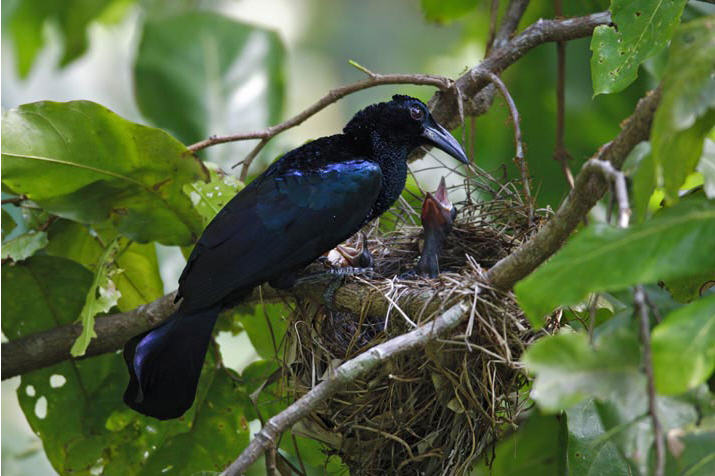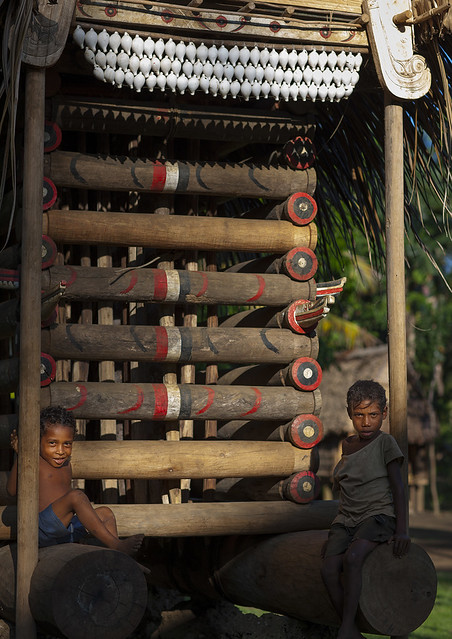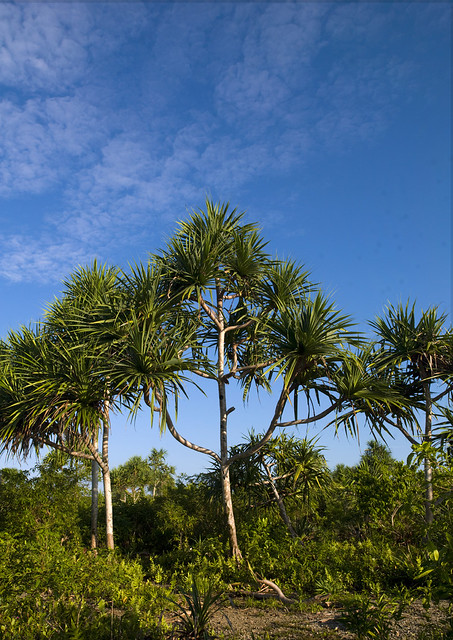Source google.com.pk
Trobriand Islands Rain Forests
In October through May the high and low temperature stays very consistent. In June through September it is just a little bit colder. Since the Trobriand Islands are just nine degrees south of the equator it is very hot and there aren't really seasons. The Trobriand Islands are very wet and humid. The rainfall amount can be anywhere from eight to twelve inches per month.
The biome I chose is the rainforest. It is unique because of all of the undiscovered creatures. There are over twelve types of rainforest trees and one conifer species, the hoop pine, which is a very tall pine tree. This rainforest is a very beautiful place and is a moist, warm ecoregion.

The region that the rainforest is in is Papua New Guinea. The ecoregion lies just off of the southeastern tip of Papua New Guinea. The largest portion of the ecoregion is made up of three different islands of the D'Entrecasteaux group: Good enough, Ferguson, and Normanby are the names of those three islands

The main plant species in the Trobriand Islands are rainforest trees. There are about a dozen different rainforest trees. This group of trees includes one conifer species, the Hoop Pine which towers over all of the other rainforest trees. Interestingly there are two endemic ant plant species (plants that have a symbiotic relationship with ants) symbiotic means that the plant depends on the ant and the ant depends on the plant.

Many of the herbivores in this region are insects. One of the most fascinating insects is a Phylliidae (walking leaf) These fascinating insects look like a leaf. They come in many different shapes and colors. They are very well adapted to their environment because they blend in very well with all of the trees and leaves. When they walk, they rock back and fourth imitating a leaf blowing in the wind.
Most of the predators are insectivores such as bats, marsupial (possum), and rodents. They prey on insects. Marsupials are very well adapted to there environment because they live in trees which the rainforest is plentiful in. For example the Striped Possum have a larger fourth finger to dig out insect larva that has burrowed into wood. They also have a wrist that if tapped on wood can locate insect larvae.
The people on the islands are mostly farmers that grow food to trade. They believe in spirits that cause things such as death, weather, and more. The main sport on the island is cricket. It is considered an honored sport and only the greatest can play. Magic is also a big part in their life. They believe in spells that can help their crops grow and keep someone alive. The elders and chief of the tribe have the greatest spells that can control many things.

One of the biggest threats in this rainforest is that people are taking down trees to make space for farms and are logging. This is killing many animals that depend on trees to survive which is causing extinction. The animals of the rainforest depend on trees to survive. Not only do the animals need trees but we do to. Trees produce oxygen instead of carbon dioxide. I think that for every tree taken down a new one needs to be planted. People are being careless and thinking that there are tons of trees and one won’t hurt. Pretty soon one will become hundreds if people keep thinking like that.

The ecoregion lies just off the southeastern tip of PNG in the southwest Pacific and includes Woodlark Island and two island groups: the D'Entrecasteaux and the Trobriand. The largest portion of the ecoregion and the nearest to the New Guinea mainland is made up of three principal islands of the D'Entrecasteaux group: Goodenough, Fergusson, and Normanby. Goodenough is the highest island in the ecoregion, reaching an altitude of 2,750 m, and Fergusson is the largest. Kaileuna and Kiriwina islands in the Trobriand group lie further out in the Pacific, and Woodlark Island is even further to the southwest. The ecoregion is warm and moist tropical, typical of most of New Guinea.

According to Whitmore (1984), Woodlark and the Trobriand Islands consist primarily of lowland rain forest on limestone substrates. Goodenough, Fergusson, and Normanby islands consist mainly of lowland rain forest on acid soil; however, Normanby has one area of ultrabasic soils. The major rain forest tree genera include Pometia, Octomeles, Alstonia, Campnosperma, Canarium (Burseraceae), Dracontomelon (Anacardiaceae), Pterocymbium (Sterculiaceae), Crytocarya (Lauraceae), Intsia, Ficus, and Terminalia (Mueller-Dombois and Fosberg 1998). The emergent the hoop pine (A. cunninghami) is present in the ecoregion on Fergusson (Mueller-Dombois and Fosberg 1998). The northwest portions of Goodenough and Fergusson islands are anthropogenic grasslands and agricultural lands.

Biodiversity Features
The ecoregion has many endemic species, but more certainly await discovery. The D'Entrecasteaux Islands in particular are thought to contain numerous endemic plant species (Johns 1993). The ultrabasic soils of Normanby have turned up exciting new finds, including two endemic ant plant species (Johns 1993). The forested mountains of Fergusson Island have never been surveyed biologically and are considered one of PNG's great biological unknowns (Swartzendruber 1993). Beehler (1993) emphasized this point, saying that the massif on Fergusson "promises to be a treasure trove to the first vertebrate biologists who climb its heights," and "one can only imagine what undescribed populations of vertebrates inhabit the wet montane forests above 1500 meters there." Goodenough Island contains an endemic bat (Dobsonia pannietensis) and an endemic forest wallaby, the black dorcopsis (Dorcopsis atrata). Woodlark Island is also considered to be very unusual botanically and contains an endemic cuscus (Phalanger lullulae).
There are thirty-eight mammal species in the Trobriand Islands Rain Forests [AA0125]. Most of these species are bats (twenty-four) in four families (Pteropodidae, Molossidae, Rhinolophidae, and Vespertilionidae), followed by rodent species (Muridae). Three species are listed as threatened (VU or higher) by IUCN (1996): black dorcopsis (Dorcopsis atrata), St. Aignan's trumpet-eared bat (Kerivoula agnella), and Tate's triok (Dactylopsila tatei). Four mammal species are limited to the ecoregion, and five more are near endemics (table 1).
Table 1. Endemic and Near-Endemic Mammal Species.
Family Species
Perorictidae Echymipera davidi*
Phalangeridae Phalanger lullulae*
Macropodidae Dorcopsis atrata*
Petauridae Dactylopsila tatei*
Pteropodidae Nyctimene major
Pteropodidae Pteropus pannietensis
Vespertilionidae Kerivoula agnella
Vespertilionidae Pipistrellus collinus
Muridae Chiruromys forbesi

An asterisk signifies that the species' range is limited to this ecoregion.
Most of the ecoregion, with the notable exception of Woodlark Island, is part of the D'Entrecasteaux and Trobriand Islands EBA (Stattersfield et al. 1998). Two bird species are endemic to the ecoregion (table 2). One of these birds, the curl-crested manucode, is found on all three major islands of the D'Entrecasteaux group and in the Trobriand Islands. The other, Goldie's bird-of-paradise, is listed as threatened (VU) by IUCN (2000) and is found only on Fergusson and Normanby.
Table 2. Endemic and Near-Endemic Bird Species.
Family Common Name Species
Paradisaeidae Curl-crested manucode Manucodia comrii*
Paradisaeidae Goldie's bird-of-paradise Paradisaea decora*
An asterisk signifies that the species' range is limited to this ecoregion.
Current Status
As mentioned earlier, the northwest portions of Goodenough and Fergusson islands are anthropogenic grasslands and agricultural lands. A scheme for a possible large-scale agricultural project on Normanby Island is mentioned by Stattersfield et al. (1998), but its status is unknown.


I love that rainforest
ReplyDelete